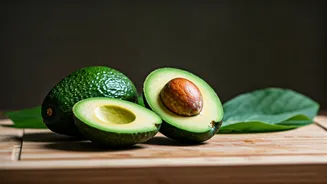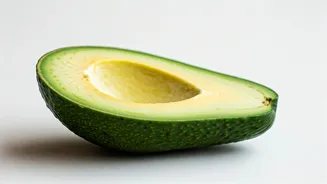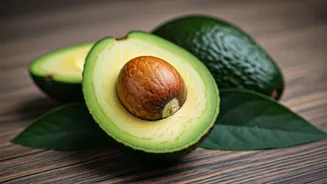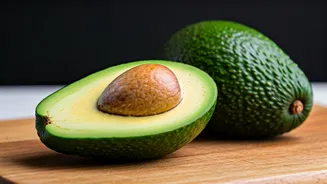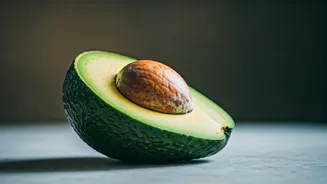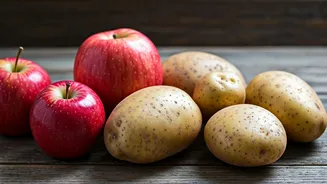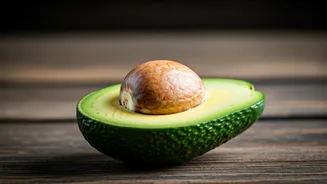Ripening Avocados Properly
The journey to avocado perfection begins with proper ripening. If your avocados are hard as a rock, don't despair! Place them in a paper bag with a banana
or apple. These fruits release ethylene gas, a natural ripening agent, accelerating the process. Check them daily for desired softness. Avoid putting them in the refrigerator at this stage, as cold temperatures can halt the ripening process. Once ripe, you can then move them to the fridge to slow down the process further, extending their shelf life for a few more days. The paper bag method works effectively, speeding up ripening so you can enjoy your avocados sooner. This method uses a natural process to ensure your avocados are ready when you are.
Storing Ripe Avocados Right
Once your avocado is ripe, proper storage is key. The refrigerator is your best friend here. Uncut ripe avocados can be stored in the refrigerator for a few days. The cold temperature slows down the ripening process, giving you extra time to enjoy them. If you've only used half an avocado, the other half needs special attention. Keeping the pit in the unused half is crucial. The pit helps to slow down oxidation. Wrap the cut avocado tightly in plastic wrap, pressing the wrap directly onto the cut surface to minimize air exposure. Another trick is to store the cut avocado in an airtight container with a piece of onion. The sulfur compounds in the onion help prevent browning. Following these simple steps ensures that you can savor your perfectly ripe avocados over several meals.
Combatting Avocado Browning
Preventing browning is an essential part of keeping your avocados looking and tasting their best. Oxidation is the culprit behind that unsightly brown color. Once an avocado is cut, it reacts with oxygen, causing it to brown quickly. However, several simple methods can help slow this process. One popular method involves using lemon or lime juice. The acidity in citrus fruits acts as a natural preservative. Simply brush the cut surface of the avocado with lemon or lime juice. Another trick is to store the avocado with the pit still intact. The presence of the pit slows the oxidation process down. Keeping the cut avocado submerged in water, after adding a squeeze of lemon or lime juice, is an excellent technique that works well. Using these easy tips will let you enjoy your avocados without the worry of premature browning.
Freezing Avocado For Later
If you find yourself with an abundance of avocados or just want to have some ready for later use, freezing is a good option. Freezing whole avocados is not recommended because the texture changes drastically. Instead, it is better to freeze avocado in a prepared form. The simplest method is to mash the avocado. Add a squeeze of lemon or lime juice to prevent browning. Pack the mashed avocado into a freezer-safe bag, removing as much air as possible. Another method is to dice the avocado. Toss the diced avocado with lemon or lime juice, and then freeze it in a single layer on a baking sheet. Once frozen, transfer the diced avocado to a freezer-safe bag. Frozen avocado is best used in smoothies, dips, or sauces, as the texture changes slightly upon thawing. These tips will help you enjoy fresh-tasting avocado whenever you desire.
Selecting Quality Avocados
The first step in enjoying a fresh avocado is selecting a good one. Gently squeeze the avocado near the stem. If it yields slightly, it’s likely ripe or ripening soon. Avoid avocados that feel overly soft or mushy, as these may be overripe. The skin color can also indicate ripeness. Generally, darker-skinned varieties, like Hass avocados, turn nearly black when ripe. Green-skinned varieties might not change color significantly. Pay attention to the stem. If the stem comes off easily and reveals green underneath, the avocado is likely ready to eat. If it's brown, it could be overripe. Examining the avocado closely before purchasing and following these selection guidelines will increase your chances of finding the perfect avocado for your needs.
